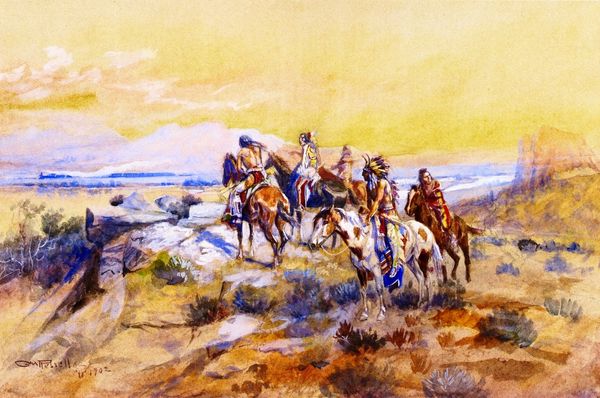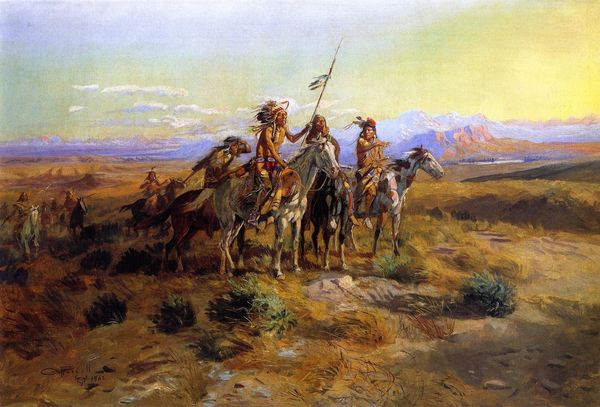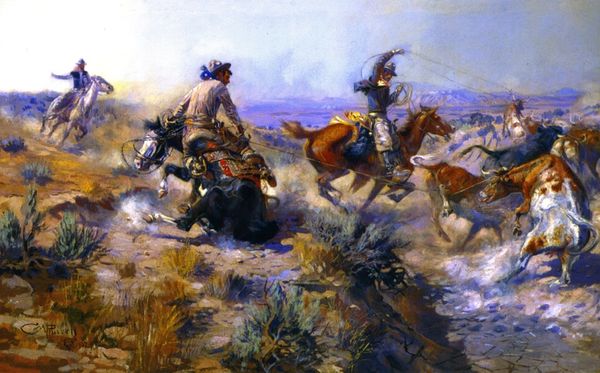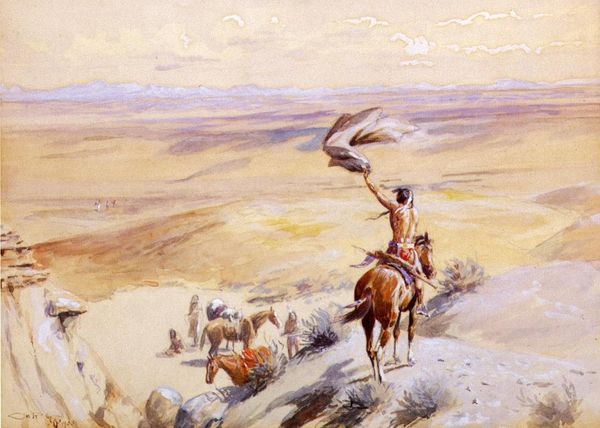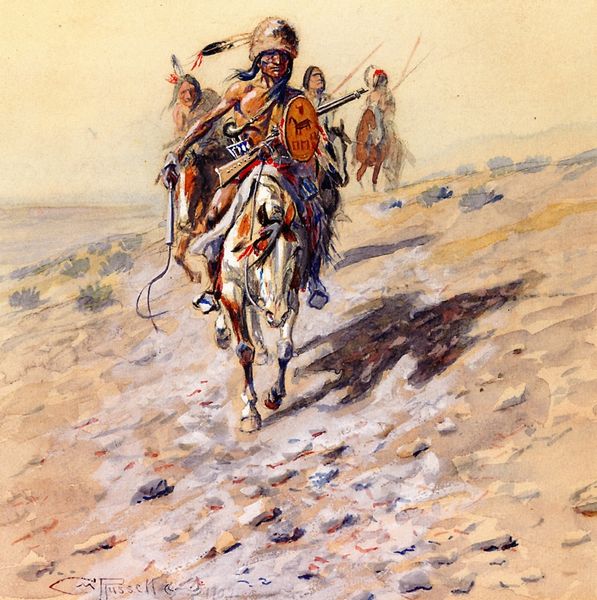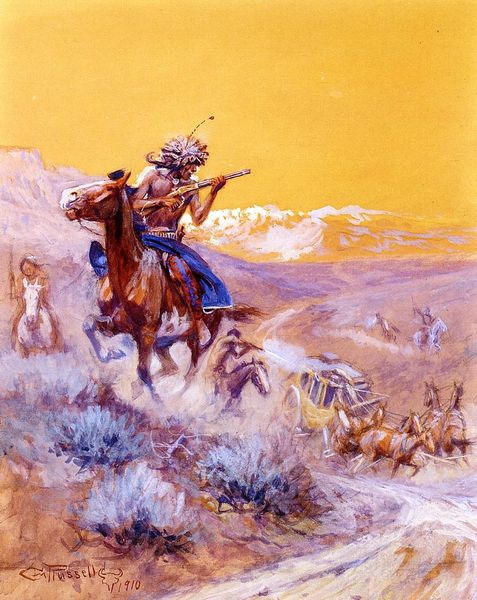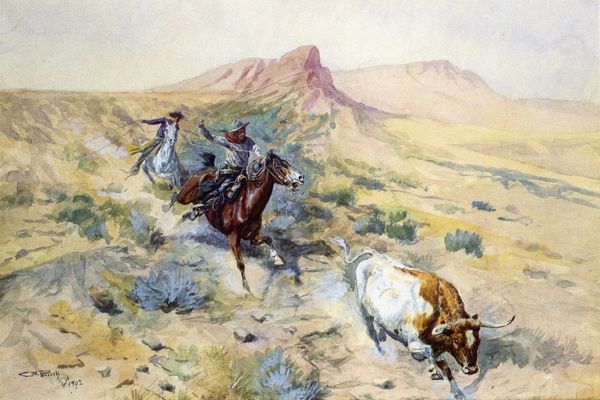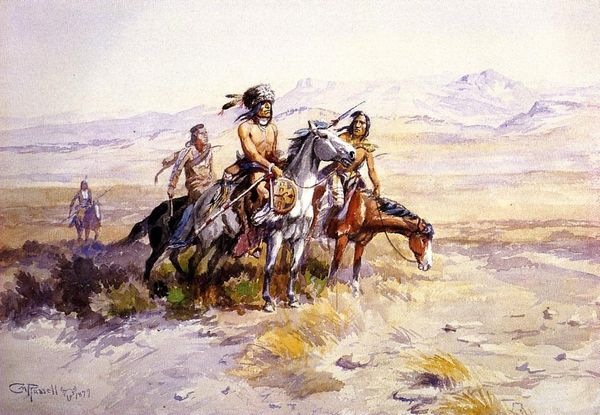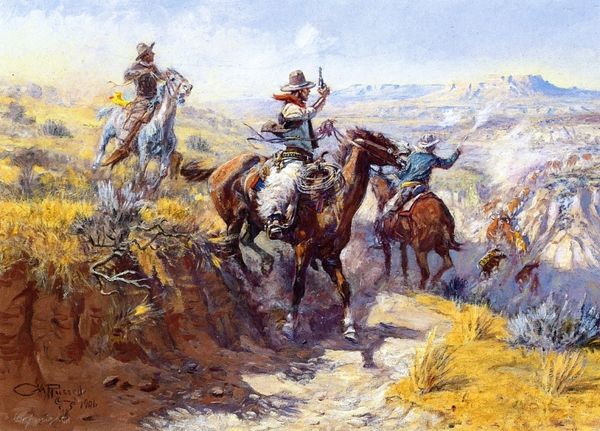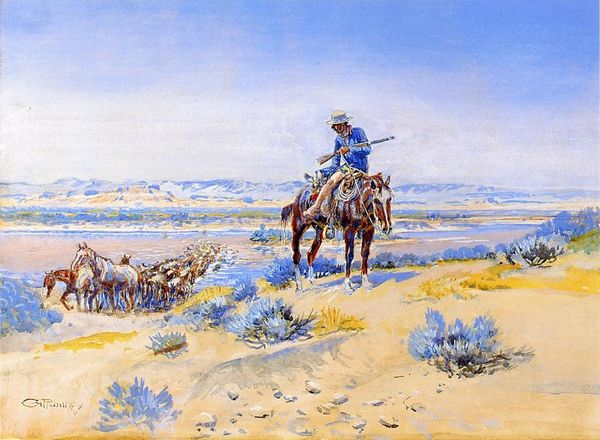
#
abstract expressionism
#
abstract painting
#
impressionist landscape
#
possibly oil pastel
#
oil painting
#
fluid art
#
acrylic on canvas
#
seascape
#
watercolor
#
expressionist
Copyright: Public domain
Curator: Here we have Charles M. Russell’s “Cowboys from the Quarter Circle Box,” created circa 1925. The artwork seemingly employs watercolors, capturing a scene from the Old West. What strikes you most upon first viewing? Editor: It’s dynamic, almost frantic. The scene is full of movement – cowboys on horseback chasing cattle across the plains. You can almost feel the dust and hear the shouts. Curator: Indeed. The dynamism arises, in part, from Russell's layering of washes and swift, calligraphic brushstrokes that create the illusion of both depth and speed. The composition is strategic as well, directing our eye from left to right following the chase. Note the use of open form where the landscape continues beyond the edges of the canvas. Editor: I can't help but wonder, though, about the romanticization of this scene. The relentless pursuit of livestock is shown as pure action and excitement, without considering the impacts on the animal, or the complex labor and the whole system of cattle ranching which depended on exploiting human labor as well as the environment. Curator: An interesting counterpoint. Yet, the artist isn't necessarily celebrating that exploitation. One could argue the appeal comes from the painting’s construction, independent of the socio-economic realities. The brushwork creates a compelling tension with the open range. Also consider the importance of the lone figure within a wide open space – a common motif in both painting and literature. Editor: I do see that aesthetic choice you are pointing out. I believe, though, in recognizing the ideologies embedded within art, and considering their relationship to issues of race, class, and power, and who had access to shaping its representations and to owning this mythologized “West” during that period. Curator: Those complexities add another compelling layer. The composition of light and shadow, the dynamism of brushstrokes - all contribute to a captivating piece from a formalist perspective. The narratives certainly become far more multifaceted once viewed through social and historical lenses, too. Editor: Absolutely. It encourages us to question the narratives presented and consider the historical context of these stories. Curator: Ultimately, this work allows for both a study of form and a deconstruction of inherited myths of freedom and possibility in the West. Editor: It leaves me reflecting on what is present, and perhaps more importantly, what’s been left out of this rugged individualism so often represented through Western expansion.
Comments
No comments
Be the first to comment and join the conversation on the ultimate creative platform.

